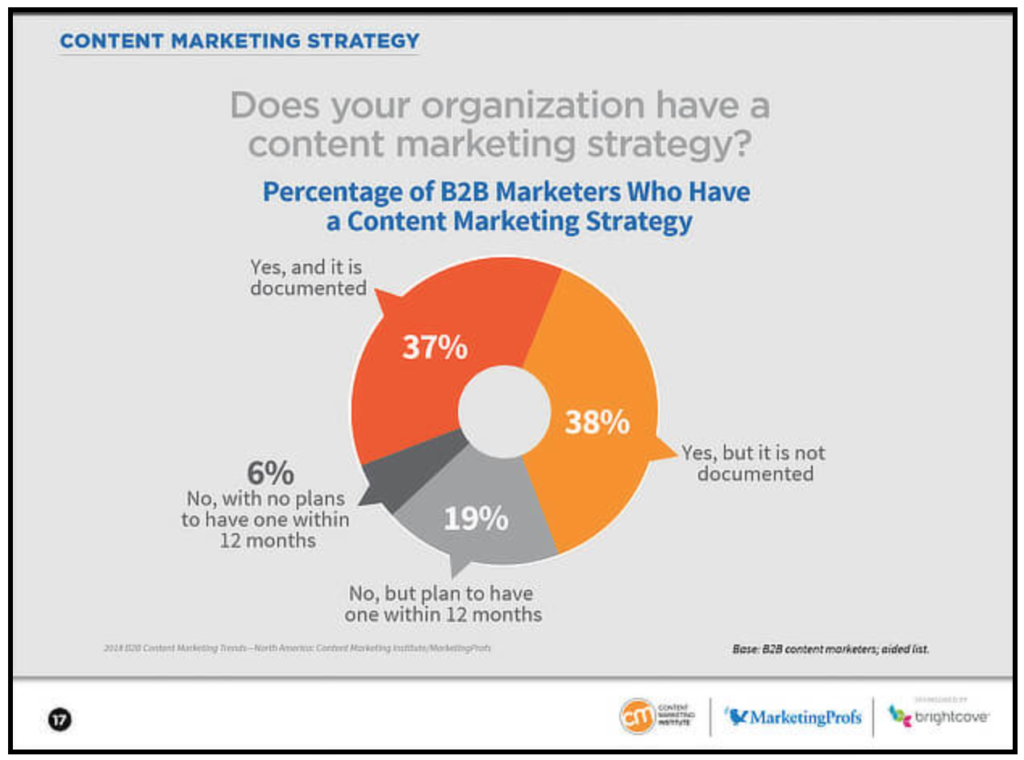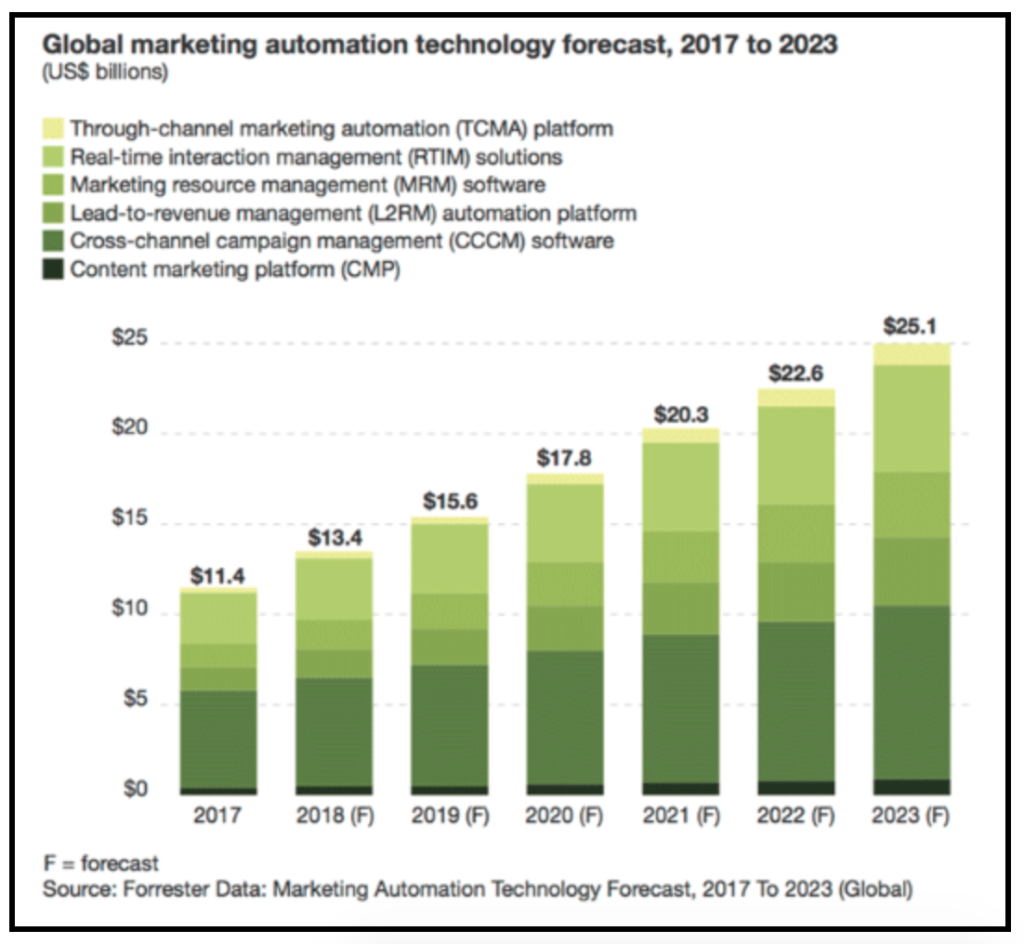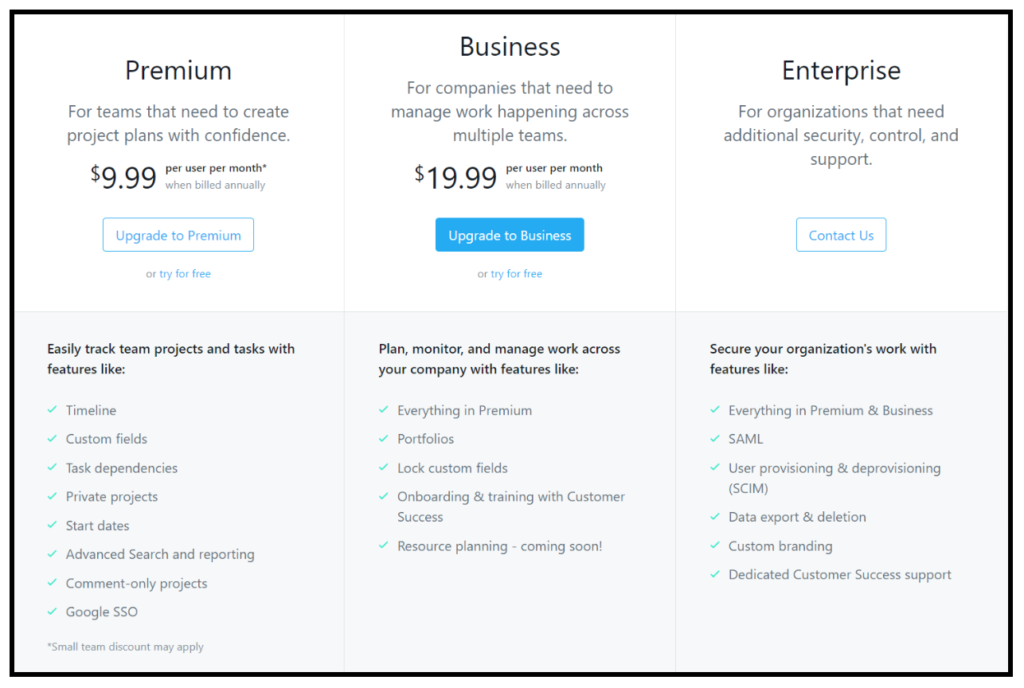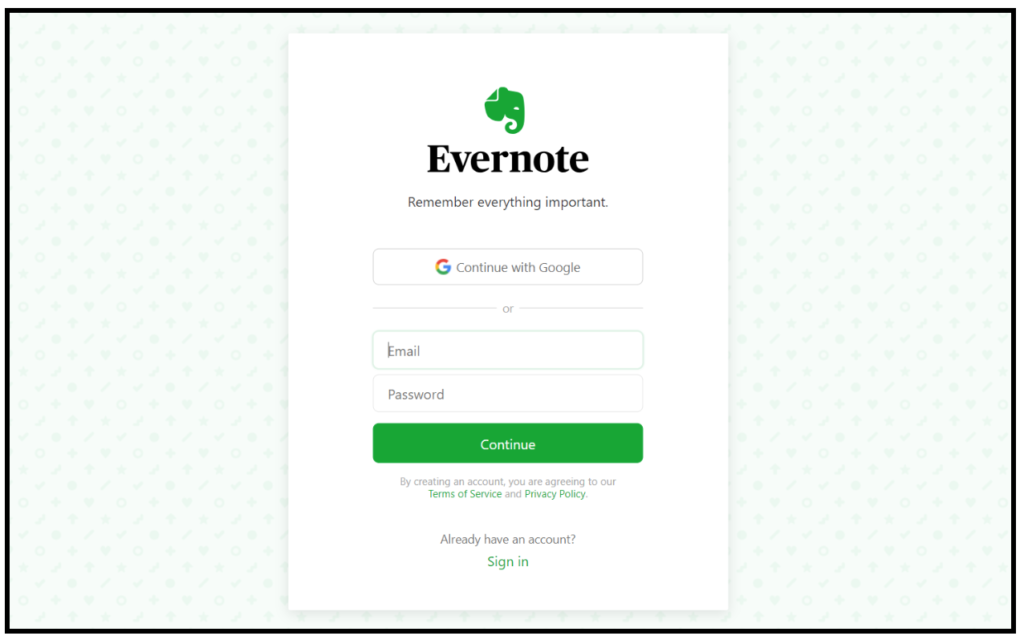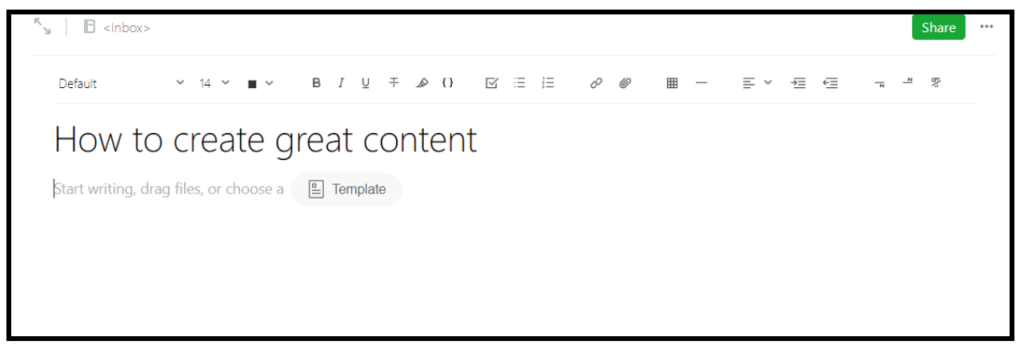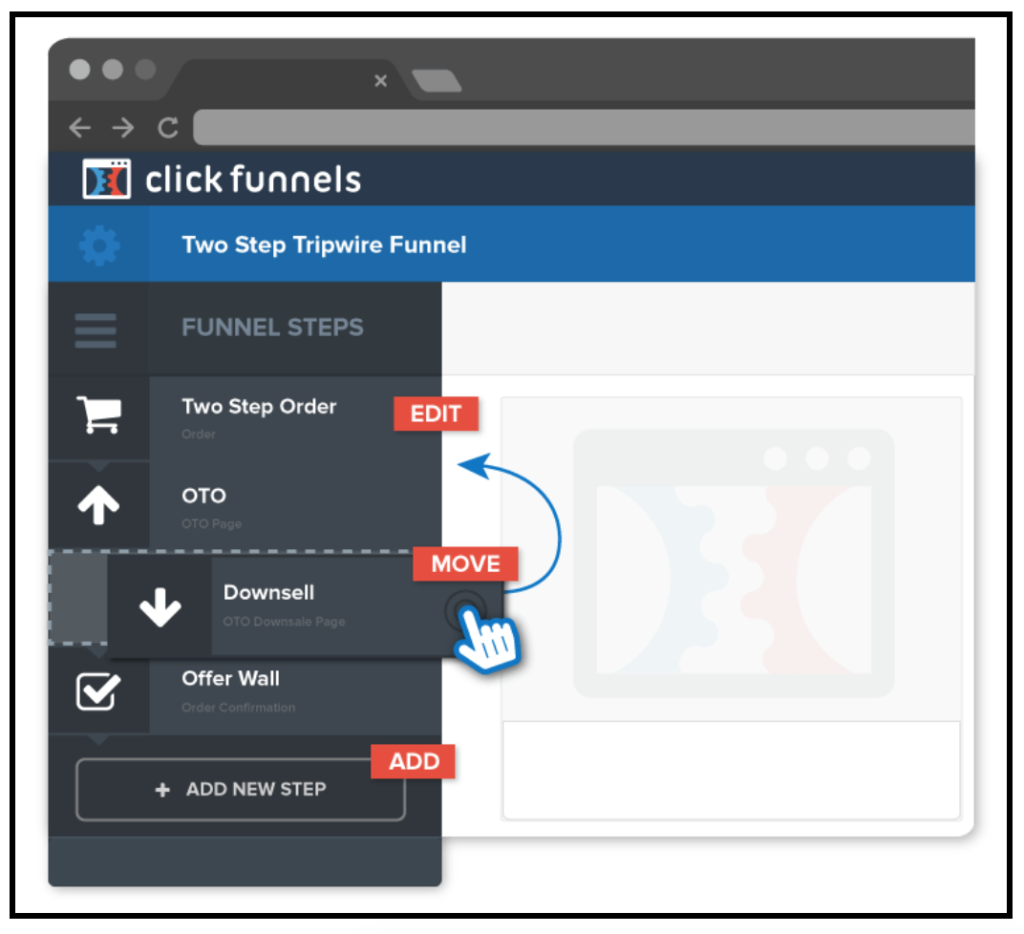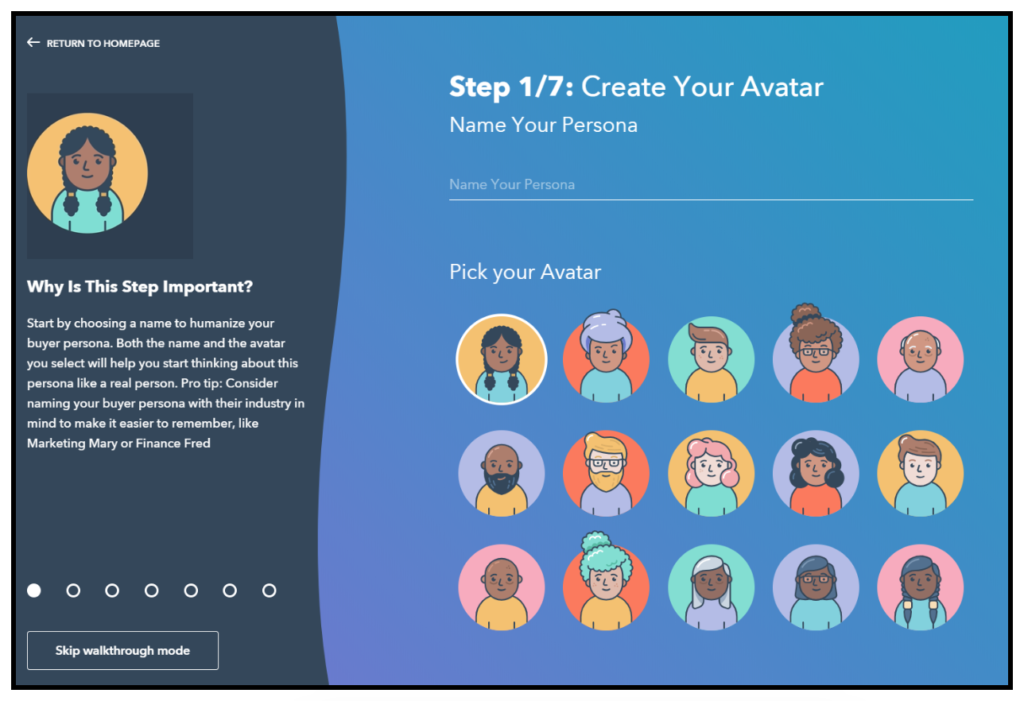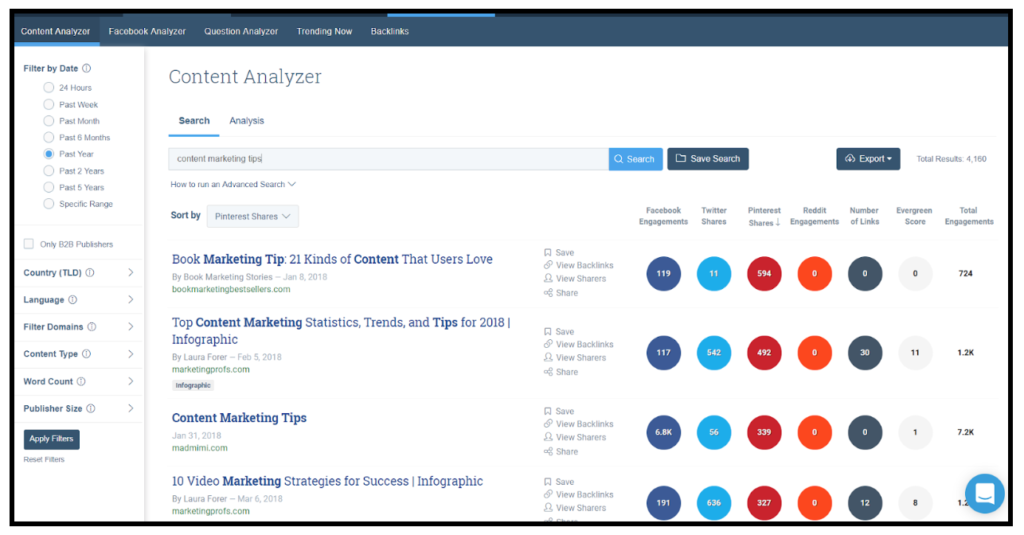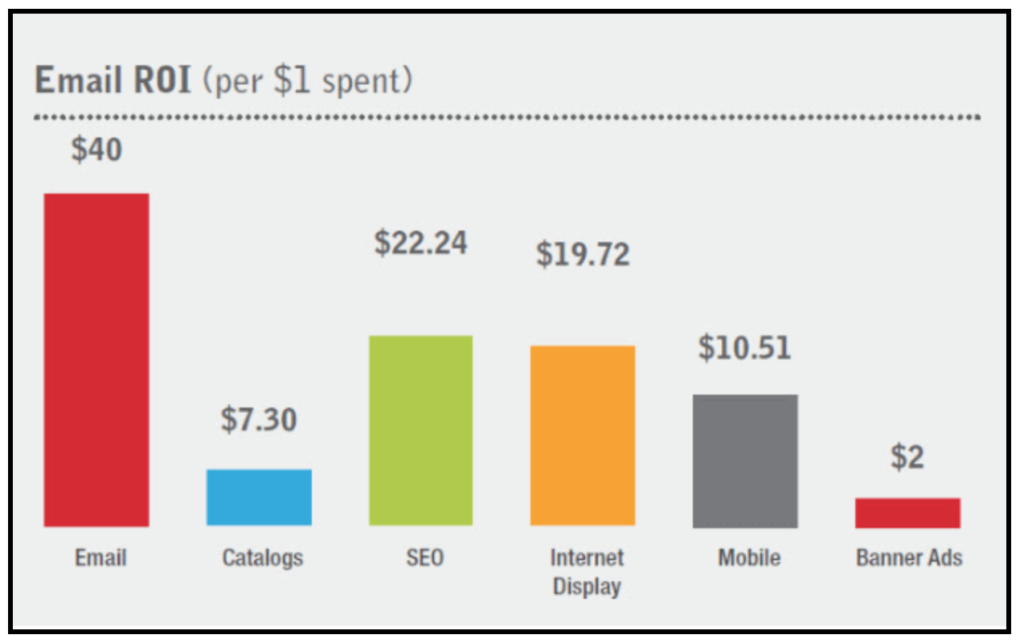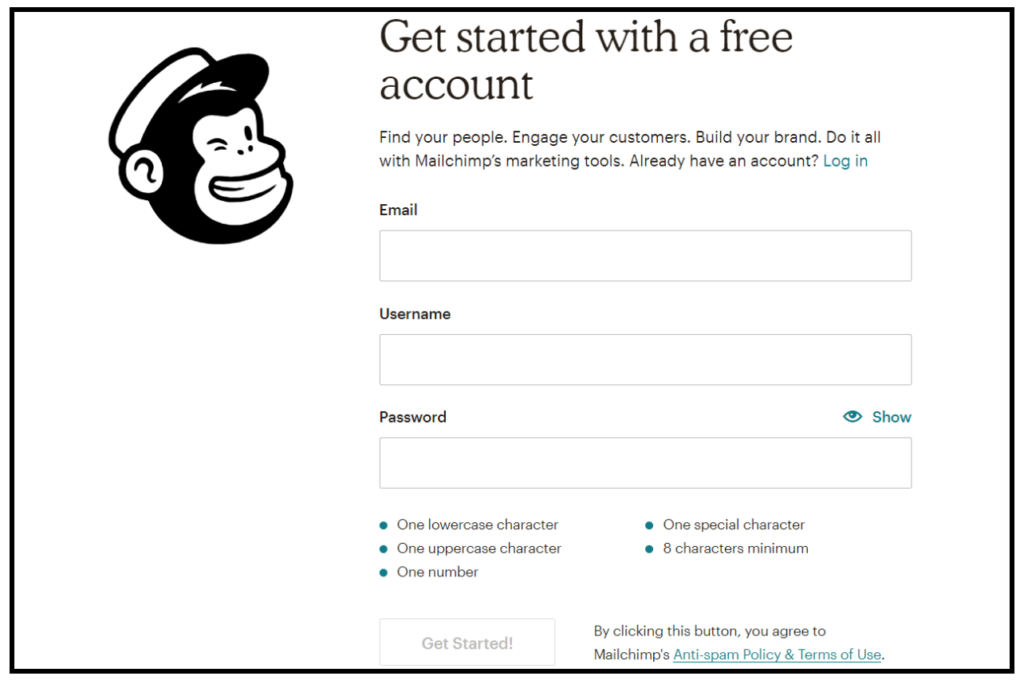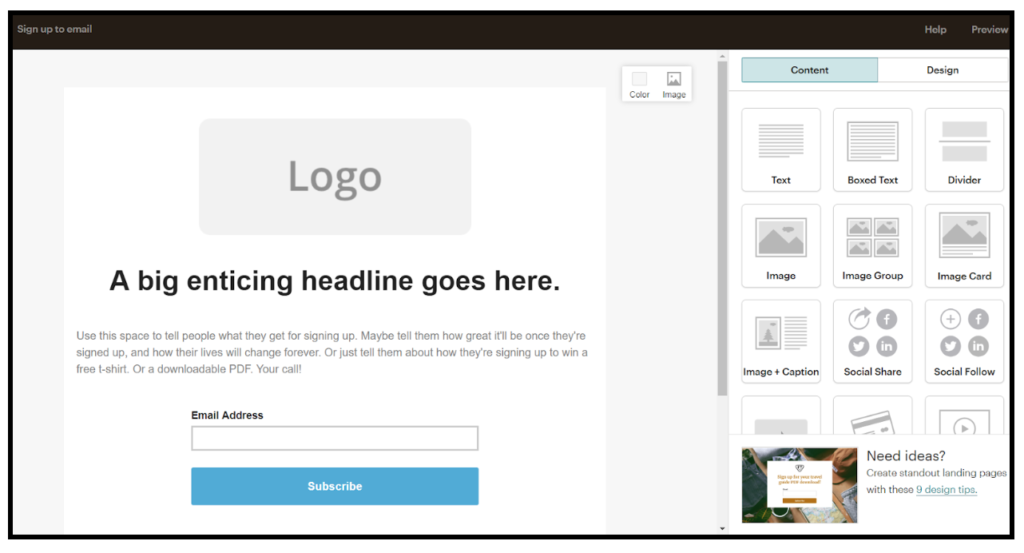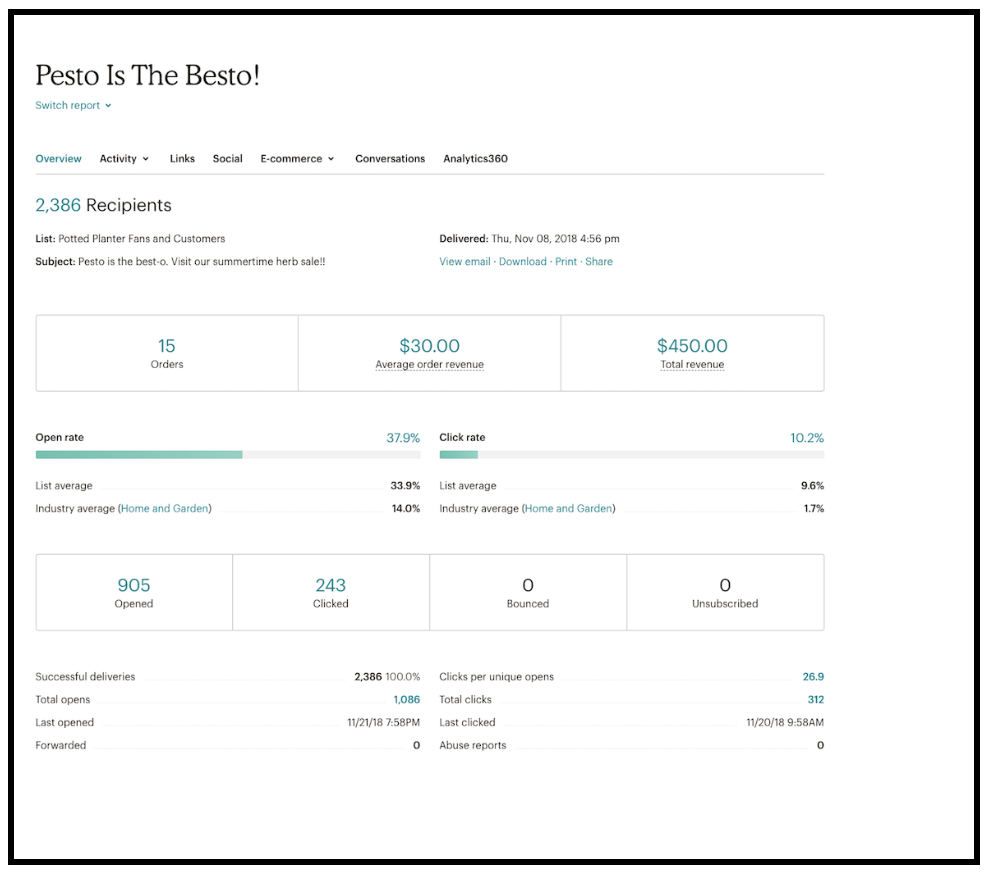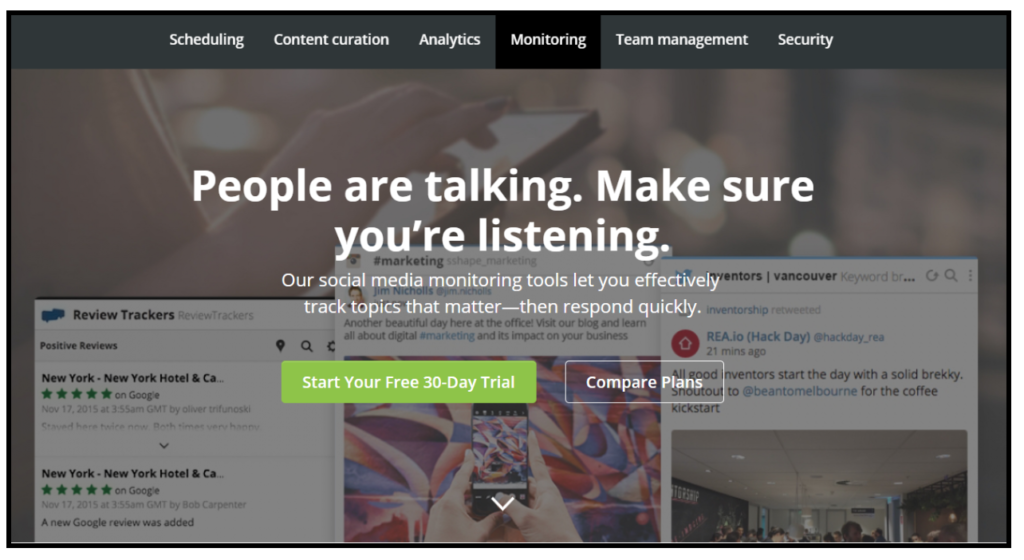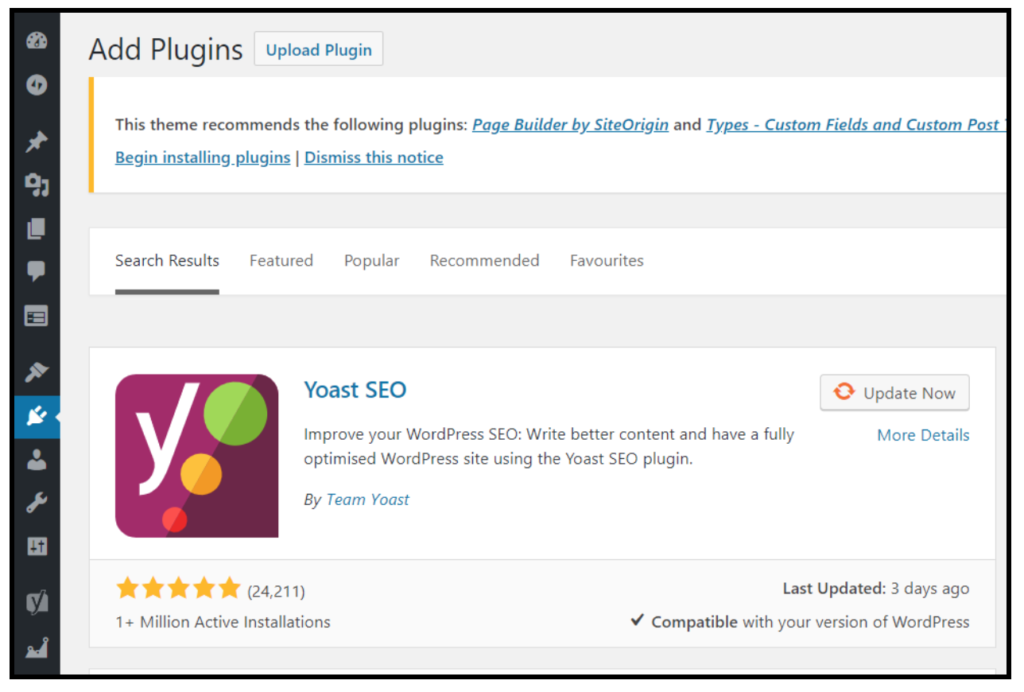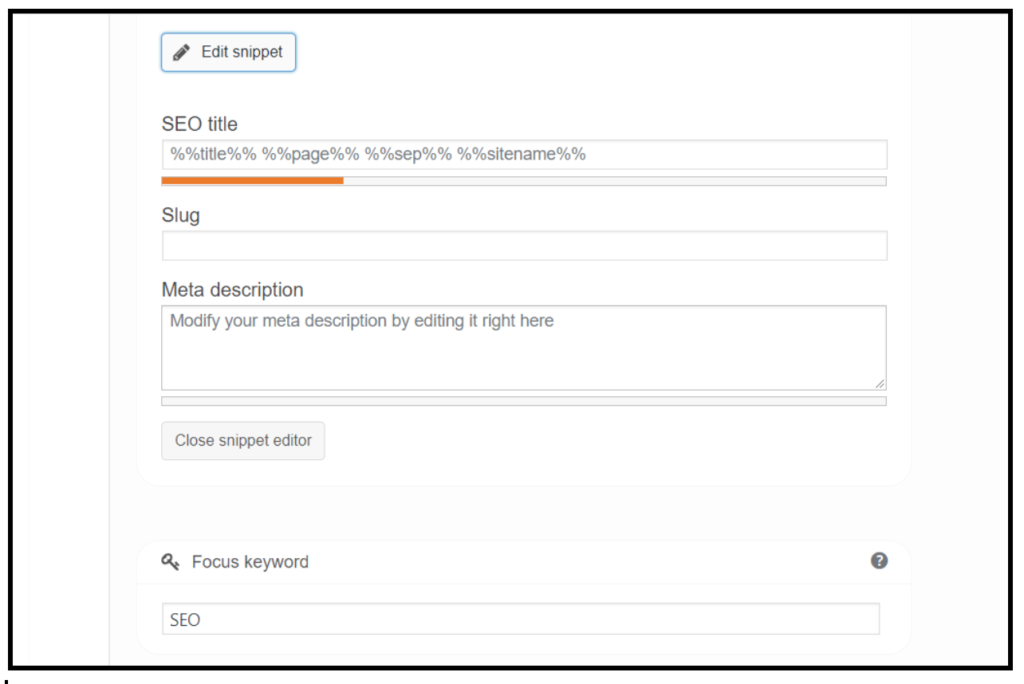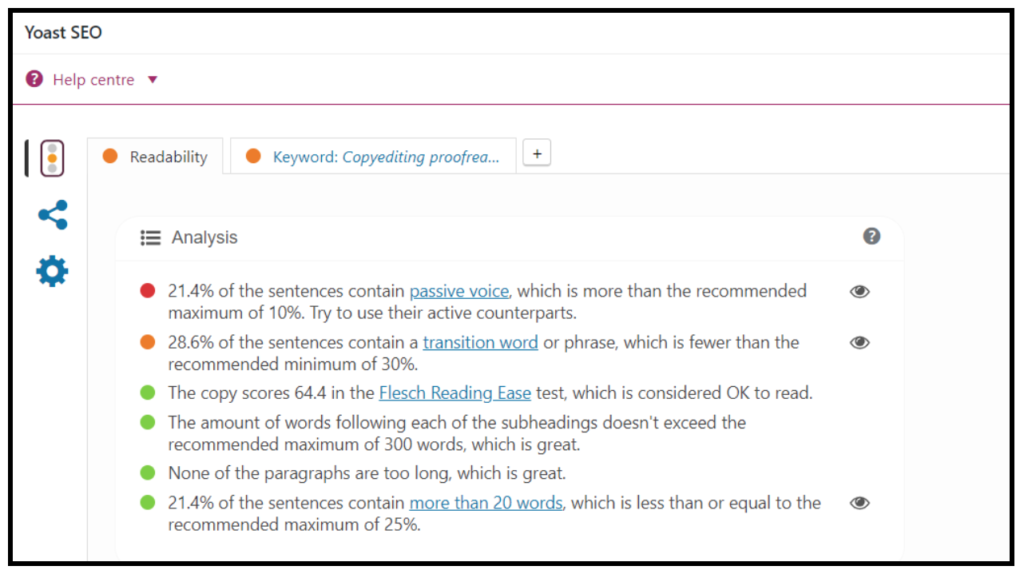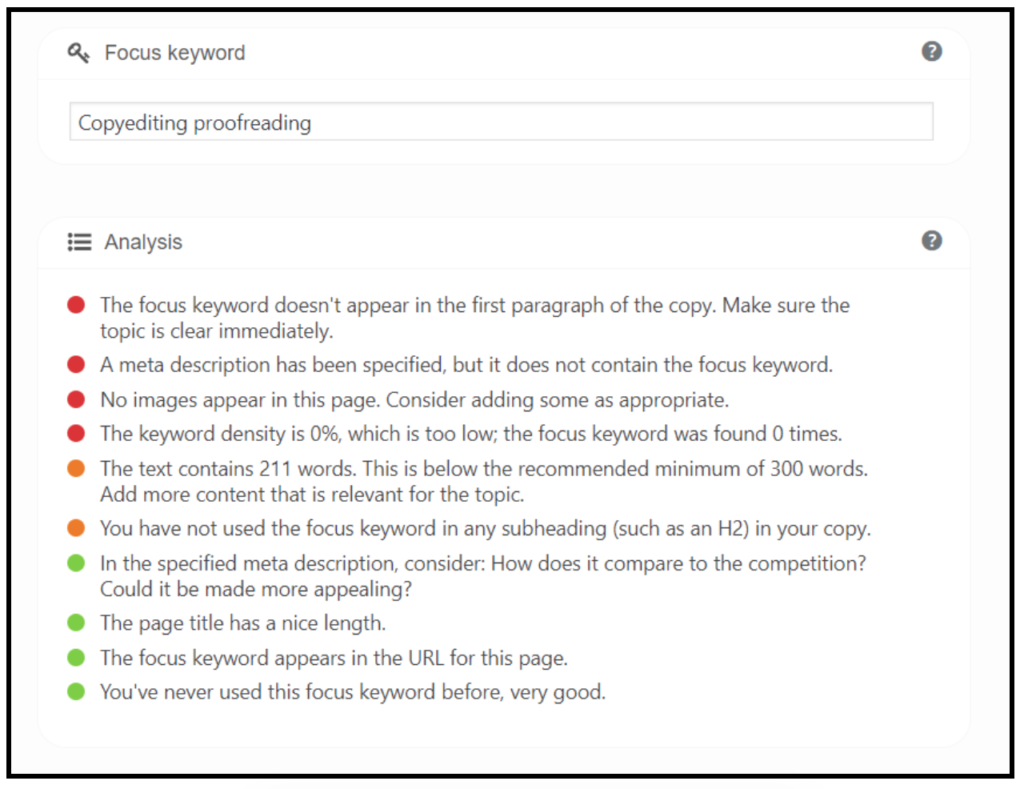- Project management/collaboration: Asana
- Brainstorming: Evernote
- Perfecting the sales funnel: ClickFunnels
- Persona development: HubSpot
- Content ideation:BuzzSumo
- Email marketing: MailChimp
- Social media marketing: Hootsuite
- SEO: Yoast Plugin
Creating content for content’s sake is one of the cardinal sins of inbound marketing. If you think it’s enough to keep churning out material in the vain hope that it’ll boost your search rankings and find you a loyal audience, then you’re mistaken.
There is simply too much content out there, and the majority of it is, at best, mediocre.
On the flip side, creating epic content gets your brand found and can foster long-lasting loyalty among your target audience. In fact, in modern online marketing, you can’t afford for your content not to be epic.
Having said that, it’s not easy to turn around your content – your strategy, processes, resources – and it can’t be done overnight.
Moving your content from being awful, getting it found by the right audience, using it to enhance your relationship with them, and placing it to inspire action all takes hard work and planning. It’s no easy feat.
But fear not, I’ve put together some steps to get you started, and will show you the tools, tips and tricks to start turning your content from awful to epic in 2019.
Revise your strategy:
If your content isn’t working for you then you may need to rethink your strategy. Or, you might be like the 25% of brands who don’t have any form of strategy – documented or otherwise.
And whilst you, like 60% of brands, may believe that content marketing is important, a documented strategy will help you to define your goals and determine how you’ll measure them.
Source: CMI
It might help to think about what you want your content to be achieving: lead generation, raising brand awareness, converting users, improving your position in search, holding on to existing customers, or something completely different.
Or you might realise that the goals you’ve been trying to achieve with content can be solved by other means. Content doesn’t fix everything.
Along with your business goals, it’s worth delving into the challenges you might come across in achieving those goals. Challenges may include budget, workforce, lack of expertise/knowledge, lack of time, or something else entirely.
Whatever it is, documenting your challenges against each of your business goals will help you to mitigate against them as you go along, or plan a mitigation strategy ahead of time.
Your KPIs
Key Performance Indicators – or KPIs – are the metrics used by companies against which they measure success. And whilst they’re sometimes used to mean goals, they are actually the metrics used to support their goals.
KPIs need to be 3 things:
- Quantifiable – they are presented in numerical format
- Actionable – they can be put into action to bring about the desired change
- Practical – they integrate with a company’s process
List them all out like this:
| Consumption Metrics | Engagement Metrics | Conversion Metrics | |
| Google Analytics | Users
Pageviews Unique pageviews |
Average time on page
Pages/session New vs returning Referral traffic |
Goal completions
Goal conversion rate Transactions Time to purchase Assisted conversions |
| Open rates
Clicks |
Subscriber growth
Unsubscribes Forwards |
Blog/newsletter subscription | |
| Social | Likes
Shares Comments Follower growth |
Conversion tracking |
If you take a baseline of your current content against these metrics, you’ll be able to judge whether your epic 2019 content is really that epic after all.
Your buyer journey
Content marketing fails if it isn’t based on a firm knowledge of the audience and their buyer journey. And whilst 88% of the highest performing teams say customer journey mapping is critical to their marketing, not everyone takes the time out for this crucial step in the content process.
Research carried out by Aberdeen Group, Customer Journey Mapping: Lead The Way To Advocacy has shown that brands who invest in their buyer journey see a year-on-year growth in revenue of 24.9% (compared to 16.2% who didn’t).
The same study showed that companies with a focus on buyer journey saw:
- 10 time improvement in customer service costs
- 24% more positive engagement among their audience
- 18 times faster sales cycle
- 56% higher revenue.
If you’ve done your buyer persona research properly, you’ll have a rounded understanding of your audience types, their goals and their challenges. You’ll also know your customer journey map, with all the touch points at which your persona(s) intersect with your brand.
If you haven’t yet developed your buyer personas or customer journey mapping, then make a start today.
Next, you need to make sure your content responds to your buyer’s needs and expectations at each stage of their journey so that your content is being used to give them a seamless experience of your brand.
To check in with where your content hasn’t been working, you need to check in with your data.
Use Google Analytics to drill down into Behavior – Site Content- Content Drilldown. Here you’ll be able to look at bounce rate, average time on page, pageviews.
Your aim should be to produce content that will see users engaging with it. This would mean a decreased bounce rate, an increased average time on page and increased pageviews.
Where your numbers are looking less than impressive consider which content types are failing, and see if you can work out why. It could be that a whole content type (say, your video content) isn’t working, or that some elements of each content type aren’t up to scratch.
Whatever it is that’s not working, make a list of all of your channels and decide which you’re going to prioritize in 2019.
<span”>Revise your process
One of the main stumbling blocks businesses come across in their content marketing, is the ability to produce high-quality content consistently. According to Zazzle, 60% of marketers find it hard to produce consistently good content.
If this sounds like you, then you may also need to take a look at how you produce and publish your content. What processes do you have in place from content ideation through to delivery and analysis? What steps do you have in place to ensure that you’re producing consistently excellent content?
Start by listing out your processes – your personnel involved at each delivery point, the tools you use, the resources you rely on to help you. Then identify the gaps.
Think about what your ideal process would look like:
- Would you prefer to keep content in-house or outsource to freelancers?
- If you were to keep content in-house, what would your team look like, and what would the key roles and responsibilities be?
- How would you facilitate collaboration?
- Who has final edit on the content?
- What’s the process for distributing the content?
One thing I value highly is a shareable content calendar that sets out a timeline for the production, editing, and publishing of content, along with an assigned person responsible for each content piece and a publishing deadline.
Your content calendar should help to clarify how content is produced, published and distributed so that workloads are distributed fairly and everyone involved takes responsibility for their own part.
A big part of revisiting your process is thinking about your monitoring and evaluation. If your analysis work is an afterthought in your content marketing, then you need to start thinking about how you can make it a fundamental part of your process.
Great content is based on analysis of customers, of the market and of the business itself. With content being more data-driven than ever before, your numbers stand between your awful and your epic content.
Build up an epic toolkit
Part of the reason you’ve realized your content is awful is that you’re not getting a decent ROI. And this could be because you’re spending too many man-hours on tasks that could be automated or assisted by online tools.
According to Salesforce “State of Marketing” (2017), 67% of marketing leaders are using at least one automation platform and with given the growing penetration of automation within businesses, if companies don’t get on board, they risk getting left behind:
Project management/collaboration: Asana
Project management is a must when it come to producing content. Especially if you have a large content production team who need coordinating.
However, with the average salary of a designated project manager being over $80k per annum, it often makes more sense for companies to invest in software rather than to hire personnel.
There are plenty of project management tools out there, and the key is finding the one that best suits your team culture. But one that stands out for its user-friendliness and range of functionality is Asana.
It lets you keep all of your projects in one place. You can choose to keep your projects – or tasks within those projects – private or share them with co-workers. You can assign tasks to yourself or your co-workers, and set deadlines which can also be viewed in your calendar.
Asana also serves as a communications tool, allowing you to write and receive messages from your colleagues, keeping all of your communications in one place.
Cost: $9.99/month+
Brainstorming: Evernote
Coming up with and sharing ideas is one of those tasks which seems easy, but can get tricky, especially if you’re creating lots of content.
A recent study by Queens University showed that 39% of respondents believed that their company didn’t collaborate enough, even though 75% believed collaboration to be “very important”.
Evernote lets you note your ideas and share them with your co-workers, so that they can also contribute and help develop them.
It’s available across devices and as an app. It also has a free version, but the paid versions are relatively inexpensive, with the most expensive plan at $14/month.
To register with Evernote, you can either sign up with your Google account or enter an email and password.
And that’s pretty much it. From there, you can start creating your notes:
You can type freely, or drag and drop images, documents or web pages.
What I find useful about Evernote is that you don’t have to be online to access your notes – a big bonus if you spend lots of time working on the go.
Perfecting the sales funnel: ClickFunnels
As I’ve already discussed, the key to epic content is knowing your buyer journey – or as it is also known, the buyer funnel.
Your buyer funnel is the process through which your customers become aware of your brand, and turn into leads, then into customers, and then into loyal fans. According to Salesforce, however, 79% of all leads never turn into sales, which demonstrates how misunderstood buyer funnels are.
Knowing what your buyer funnel looks like can help you to produce the right content to share with your buyer at the right stage of their journey through the funnel.
Creating your buyer funnel is something many brands do manually, and it’s where a lot of time can be wasted. But software like ClickFunnels let you to develop your buyer funnel using a simple drag and drop technique, or use their templates to save further time.
You can produce different types of funnels, from membership to sales funnels, and it has email integrations and A/B testing.
Persona development: HubSpot
If you want to make sure you content goes from awful to epic then you can’t cut corners on your persona work. But you can draw on resources to help make the process simpler for you.
HubSpot have a great section of their site dedicated to personas, with free templates you can download (in exchange for an email), and a “make my persona” tool:
Content ideation:BuzzSumo
Coming up with ideas for content can be a tough spot, especially if you’re creating a lot of it. And if your content is awful it might be because you’re not creating the sort of content that people want to be engaging with.
Tools like BuzzSumo help you to listen to what folk are discussing online, so that you can respond with similar topics.
BuzzSumo is a relatively expensive tool, with price plans ranging from $79/month to $499+/month. But each plan comes with a 7-day free trial.
Email marketing: MailChimp
Email marketing remains one of the most cost-effective ways of sharing content to generate leads. According to Smart Insights, it has an ROI of $40 per dollar spent.
Source: Smart Insights
And in an age where consumers are multitasking across various devices and platforms, email remains as prolific as ever:
- 74 trillion emails are sent each year
- 90% of US adults use email
- 95% of professionals use email
Having said this, email marketing can be one of the most time consuming aspects of content marketing, with around 68% of companies taking around a week to produce one email.
Yet email marketing is fundamental to online businesses, particularly in eCommerce, with an average 5% of abandoned cart customers being rescued as a result of a well-timed mail shot.
For your email marketing, you can’t go far wrong with MailChimp. It’s mobile-friendly, there’s also an app, and it’s free. You can upgrade to premium at $99/month to enjoy advanced integrations, multi-variant testing and increased contact list limit.
To get started with MailChimp, you just need to register with an email address and password:
You’ll then be sent an email to activate your account, where you’ll be asked for a web address (or Twitter/Facebook link) and street address.
You’ll be taken to your dashboard, from where you can start building up your contact list. You can either do this manually, or by importing a .csv spreadsheet. You can also set up a landing page that will sit on your website to gather email addresses and bring them right to your MailChimp lists.
Back to your dashboard, and your campaigns are where all your email marketing campaigns sit. When you set up an email campaign, you can use predesigned templates, to which you can add your own branding, images and copy.
MailChimp gives you a lot of control over when you send out your campaigns, and to which lists (you can A/B test lists) and will also advise you on optimal sending times.
Tracking is also straightforward. You just head to Reports where you’ll be able to check on your open -, click-, bounce-, and unsubscribe rates, among a ton of other insights.
Social media marketing: Hootsuite
When it comes to getting your content seen, social media is still the way to go, with 71% of marketers deeming it the most useful content marketing tactic.
If you have a presence on several social media platforms, then Hootsuite is a cool way to keep on top of all your activity from one place.
It also saves a bunch of time by letting you upload and automate your social media posts – great if you know you have a busy time ahead and need to keep your social media ticking along while you’re otherwise engaged.
Hootsuite does come with a free trial. But after that, it can get expensive. For a solo entrepreneur it costs $29/month; a small enterprise (up to 3 users) it’s $129/month; and for a business of between 5-10 users it’s $599/month.
However, for the price you pay, you get decent value.
The more you pay, the more social profiles you can connect to (up to 35 with the Business plan). You can create posts and schedule them ahead of time. You can check your social media calendar and keep abreast of all your social content all from your dashboard.
And probably the most useful function of Hootsuite is its social monitoring. It allows you to check up on keywords. Trends or brands (including yourself) that are being talked about on social media. You can then jump in and join those conversations.
Hootsuite also has decent analytics to help you track your social campaigns.
SEO: Yoast Plugin
As you probably know, good content gets nowhere if it isn’t optimized appropriately for search.
With 95% of people only ever looking at the first pages of results, you need to get your content optimized so that it’s found by your target audience.
To get your content found by search engines, and by the people who will be looking for the your content, you need to at least provide the following metadata to your content:
- Meta-descriptions – the 300-character synopsis of your page that appears in the search results page and encourages people to click onto your page.
- Title tags – the name you give to your page which appears as the listing heading in search and also in the tab in your browser.
- Image alt text – the text information you give to images so that it can be described to the visually-impaired, described to search engines, and appear when the image won’t load for any reason.
- Keyword targeting – your content itself should include the words and phrases for which you want to be found in SERPS.
Plugins like Yoast help you to craft your own metadata and will score you against your keywords.
To get started with Yoast, you need to go to your WordPress dashboard and head to the plugins tab on the left-hand-side menu. Go to Add new and search for Yoast SEO. Click on it, and follow the install instructions.
When you’ve successfully installed Yoast, everytime you create a new page, you’ll see a Yoast section at the bottom of your content editor. You can then fill out your SEO title, your “slug”, meta-description, and the focus keyword for which you want Yoast to rate your metadata:
Once you’ve entered your metadata, Yoast will let you know how well you’ve done from an SEO point of view. Red shows room for improvement, green means you’re on point:
Get the content itself right
Now for the content itself. You can have the perfect strategy, process, and toolkit, but if your content sucks then nothing you do will be able to save it.
Here’s my bumper list of tips to make sure your content – whether it’s email, video, social, audio, text – is epic:
Make it helpful
Consumers go online because they want answers. That’s pretty much it. They’re looking for you to solve problems that they couldn’t otherwise fix themselves.
If your content isn’t helpful in any way then it won’t be found, let alone read.
But making sure it’s helpful isn’t always easy. It means knowing your audience, what they’re looking for (the keywords they’re using in search), and what kind of content will most suit their expectation for consuming that information.
So, once again, we come back to knowing your personas so that you keep them in mind the whole way through the content production process. From finding the perfect headline, to choosing the right content type, to identifying and designing the perfect call-to-action at the end of the piece.
Consumers are also becoming more discerning in their quest for content. They want content to be trustworthy, up-to-date, and authoritative.
In response, brands have a duty to provide credible, detailed and data-driven content that provides your audience with more than what they bargained for.
And while we’re being helpful here, make sure it’s well-presented. It doesn’t matter how well-researched, accurate and on-point your content is, if it’s overcrowded, too long, or ostentatious then it’ll be anything but helpful.
Make it entertaining
Content has a limited time to grab consumers’ attention, and so it has to have an immediate hook. Aim to do this either with a killer heading or in the opening paragraph of your content.
Or find the right design and visuals to draw in an audience. It’s estimated that content that’s accompanied by images recieve 94% more views, which is a staggering reason to get your visuals right.
And whilst I’ve discussed the importance of authority, your content must find a way to entertain.
By this I don’t mean it has to make your audience laugh out loud. What I mean is if you don’t tell a story, if you don’t elicit an emotional response, then your content won’t resound with your audience and will probably be overlooked.
In the same way – and this means knowing your audience again – you need to speak the language of your audience. Use terms they use, not your industry jargon.
This is their content, not yours.
Inspire action
And, of course, content is meaningless if it doesn’t have a next step of some sort.
Remember your buyer funnel? Your content is there to help move your customers through the funnel. Make it easy for them to take action and provide a clear call-to-action at the end of the piece, or half-way through as well if it’s long.
Make sure your content is also optimized for sharing on social media or via email by providing the right buttons and links.
In summary
So your 2018 content was awful. It didn’t get shared on social media, wasn’t found online, and didn’t convert the leads you were hoping. All-in-all, your content was a total disaster.
But if you’re serious about closing the content gap then there’s no reason you can’t turn your content around in the new year.
Yes it takes time. Yes it take a different approach. But it can be done.
With a strategic rethink, a change of plan, and a replenishing of your resources, you may find that your content reaches epic status before 2019 is up.
The key to all of this is one thing: your target customer. By knowing your personas and keeping their journey at the centre of all of your content, you’ll be ahead of the game.




